Plants and humans have always co-existed side by side. From the time immemorial we looked to the natural world around us for answers to our questions, and plants were obvious candidates for making sense of life. Wise women (aka witches) and apothecaries as early herbalists empirically tested out pants to see what they did, especially as medicines. Often, when there was no rational explanation, a mysterious one would evolve.
Nowadays, steeped in legends and folklore, herbs provide a physical link to the beliefs and practices of people through the ages. For us as flower makers plants provide a bottomless well of ideas and inspiration. As we are getting prepared for Halloween, it makes sense to have a look at some of the plants and botanicals every respectful sorceress of the past would have had it in her stash.
You might be surprised to learn that most of these plants have already been featured in one way or another in my previous work and tutorials (take Roses, Ferns, Holly, Dandelions or even Fennel). Others like Hellebores, Foxglove or Rosemary will still need to be experimented with. I have also prepared 2 new plants worthy of a witch’s attention, fabric Thistle and leather Blackberries that we wil be making during my upcoming October Demonstration (read on for more information).
If you are ready to get your herbarium packed with magical and mysterous plants, here’s is my top 10 list for you:
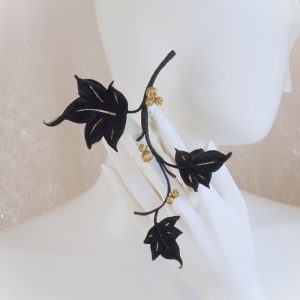 1. IVY LEAVES
1. IVY LEAVES
Ivy frequently features in spells for love and fertility. It was once believed that if ivy grew on the walls of a house the occupants were protected from evil. Not necessarily what we think today, right?
A little overlooked, ivy leaves and vines do not get near enough attention from us flower makers. I offered an IVY leaf tutorial as part of my
Fabric Lily-of-the-Valley tutorial, and guilty as charged, have not expored it much beyond that.
However, this autumn I am making a black and golded ivy peace for my new collection called La Collection Noire. Keep your eyes peeles, and if you wish to experiment with ivy leaves yourself, I encourage you to do so.
2. FERNS
Ferns have been associated with magic and healing for a long time, and are said to have many magical properties from helping to discover treasures to healing powers and more. The seeds from the fern were believed to grant the power of invisibility, and when the fronds are burned on an outdoor fire they are supposed to draw rain.
For a flower maker fern with its elegant fronds is a very versatile botanical that can be turned into many many wearble pieces. In fact so many that I have made a whole video course to show the potential of this familiar plant. From small brooches to elaborate trims, headpieces and more, ferns are a delight to work with.
 3. HOLLY
3. HOLLY
Our ancestors believed the Holly tree to possess protective qualities, such as guarding against evil spirits and bad luck. Legend has it that bringing the leaves inside during the winter months would provide shelter from the cold for fairies, who in return would be kind to those who lived in the house.
Holly makes for a perfect seasonal and Christmas brooch (or a headpiece). Whether you choose to make it in realistic green and red or opt for more festive metallics and beads, the shape is easily recognised and admired.
I have a tutorial on a leather version of Holly, however fabric holly can be made as easily. Choose heavy fabrics like satin or dense cotton (or even velvet) and make sure you back your leaves to achieve a 3D effect of the familiar spiky edge.
4. DANDELIONS 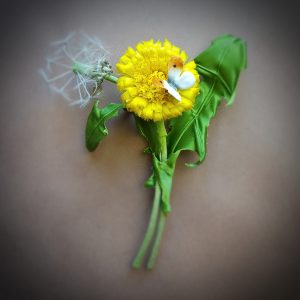
Dandelion is an extremely old healing herb which has been used medicinally for as long as humans have recorded their
histories. Dandelion magic is the magic of practical, gentle, and intentional transformation. Dandelions are associated with the three celestial bodies of the sun (yellow flower), moon (dandelion clock), and stars (parachute seeds).
If I had to choose (I am feeling lucky I don’t have to!) one plant to try out of this list, it would definitely be a Dandelion. Why?
You learn to make several elements including the flower, the dandelion clock, the stems and the leaves, each of which can be used on their own or in infinite number of combinations.
The dandelion clock has been keeping people amazed and amused ever since I made the first one back in 2014. It is the most unusual yet bestselling handmade flowers I offer. I hope you will love making it, too!
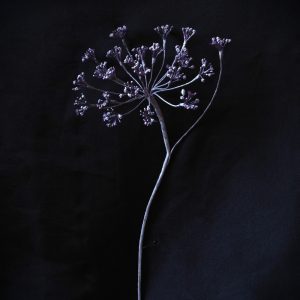 5. FENNEL
5. FENNELFennel is considered a traditional midsummer herb. Some ascribe aphrodisiac properties to it.
Fennel was also associated with magical powers of protection, and twigs of it were hung over doors to protect the inhabitants against evel spirits and demons.
Fennel??? I hear you ask.
Personally I am mesmerised by all botanicals, that’s why I made fennel during one of the live demonstrations last year. Lacy and airy, fennel seed umbrella can easily become a whimsical headpiece or a statement brooch.
As an added BONUS during the same demonstration, I showed how to make
HONESTY, another unusual botanical straight from the Witch’s Herbarium.
6. LOTUS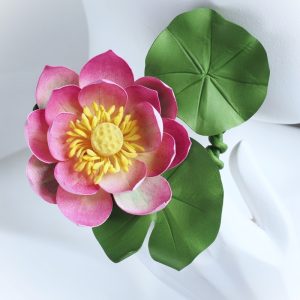
The lotus flower has been associated with magical properties in many cultures. The ancient Egyptians believed lotuses had the ability to resurrect the deceased, as seen in Book of the Dead transformation spells. Each flower color also has its own symbolism. For example for Buddhist practitioners, a white lotus symbolizes purity.
This showy flower made centre stage during one of the live demonstrations last summer. Thanks to the special petal template this type of lotus can be successfully made using a wide range of fabrics from metallics to velvet and satin as well as genuine leather.
I have even dyed my leather to achieve a realistic look of my lotus bloom. Due to its size and structure this flower is simply perfect for headpieces or hat trims.
 7. SUNFLOWER
7. SUNFLOWERSunflowers are pure sun magic. Due to their loyalty to the sun, sunflowers were often given to loved ones as a sign of loyalty and adoration.
Sunflowers are considered sacred in some Eastern religions, such as Buddhism, and represent spiritual enlightenment. Their ability to turn towards the sun is a metaphor for the human quest for enlightenment.
Well, another symbolic and super popular flower here. Easy to recognise, easy to wear and easy to make, especially if you opt for the
Leather Sunflower which does not need any tools to make.
Cotton, silk satin or organza sunflowers are very beautiful and perfect for straw hat trims. If you have not made them yet, I highly recommend you try.
8. STRAWBERRY 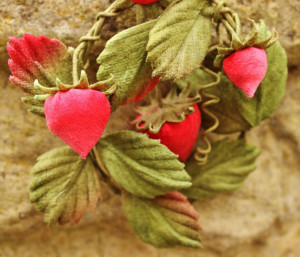
Small but mighty. Highly prefumed, highy flawoursome and no bigger than a fingernail, the wild strawberry shows up in European mythos as a fertility-inducing and love-producing fruit beloved of goddesses such as Venus, Aphrodite, Freyja, and the Virgin Mary. It was said the fruit of strawberry, when shared with another, would produce love.
This charming well known summer berry can be easily made with fabric or leather. Arrange the berries and leaves into a playful brooch or a juicy headpiece for a younger (or perhaps more mature :-D) wearer. The best bit is that you do not need to sew anything here. Just follow the instructions to make your berry feast.
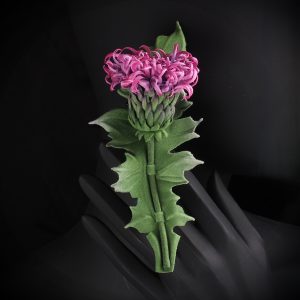 9. THISTLE
9. THISTLEMany pagan cultures believe the thistle has magical properties. It is believed to repel thieves, ward off evil, and is a tool for purification. The purification and protection powers of the thistle were once considered so strong it was used as a remedy for the plague.
I am rather pleased with the new arrangement of flower and leaf i have come up with. This makes for a more wearable and stable brooch when arranging just one flower. To learn how to make this version of Thistle please book your spot for the upcoming demonstration.
There is a lot of beauty in the tistle’s rough personality. Let’s uncover it in the Demonstration.
10. BLACKBERRY 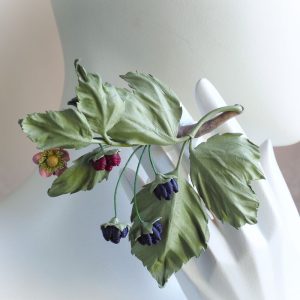
Blackberry has a controvercial past. Once believed to be the fruit of the devil, in some cultures, blackberries are thought to represent money and are used in money spells or placed in wealth corners of the home. Eating blackberries is said to bring good luck and financial success. In addition to protection and prosperity, blackberries are also believed to have healing properties.
I have developed this stylised version of blackberries for the upcoming demonstration. The berries and the leaves can be made without any tools, therefore making them perfect for a beginner.
As an additional touch, I am going to show how to make blackberry flowers in case you wish to add them, too.
This mini list has just scraped the surface or rather provided the entrance to the Witch’s Herbarium. Many more plants, herbs and flowers can be included into it. Think
roses,
rowanberries,
daisies,
irises,
echinaceas , the ist can go on and on. For more tutorials visit my Flower Making Library using the button below.

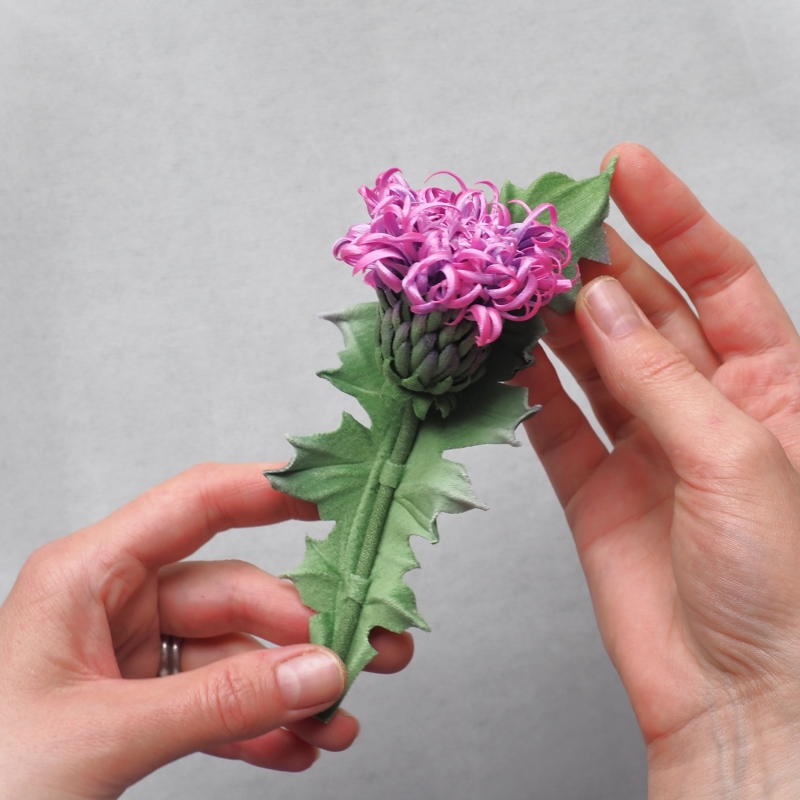

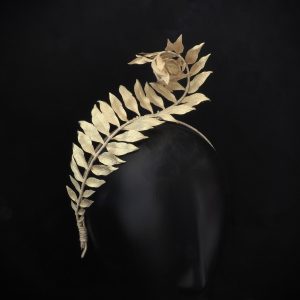








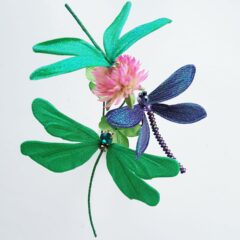
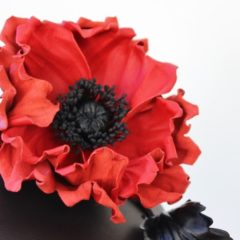
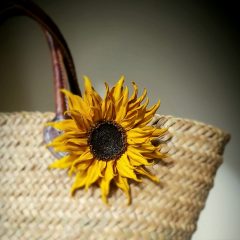
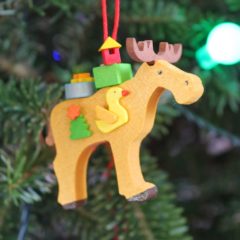

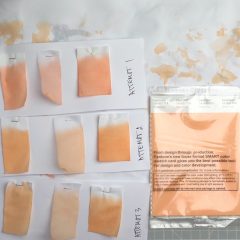
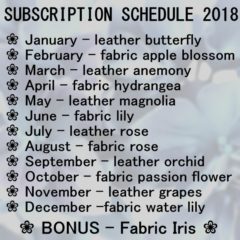
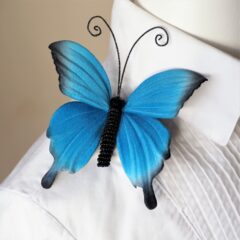
Leave a Reply